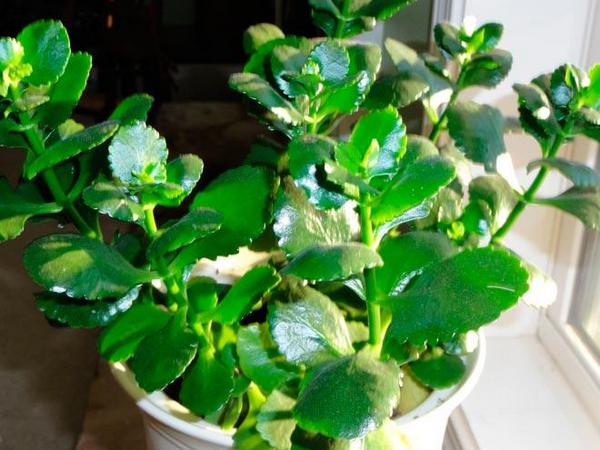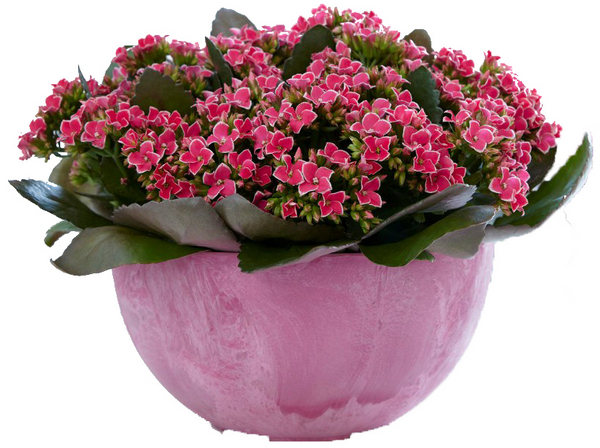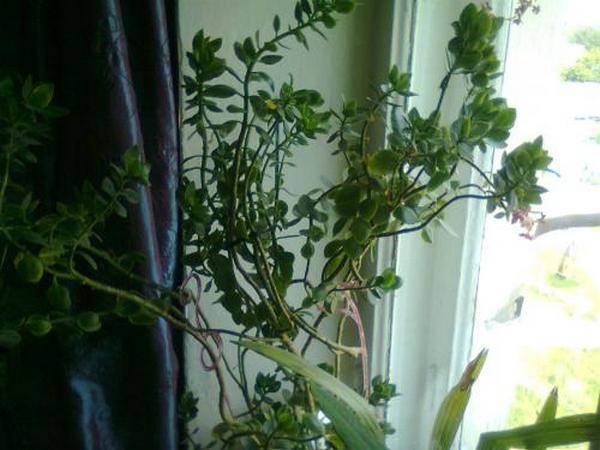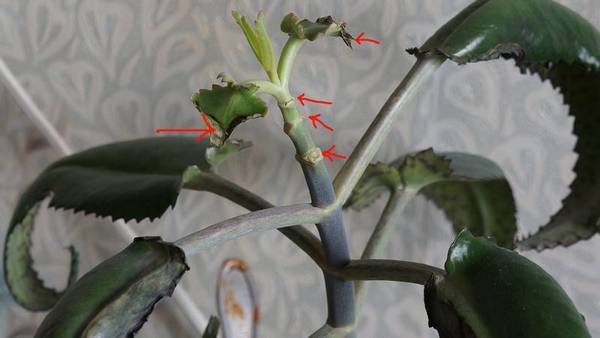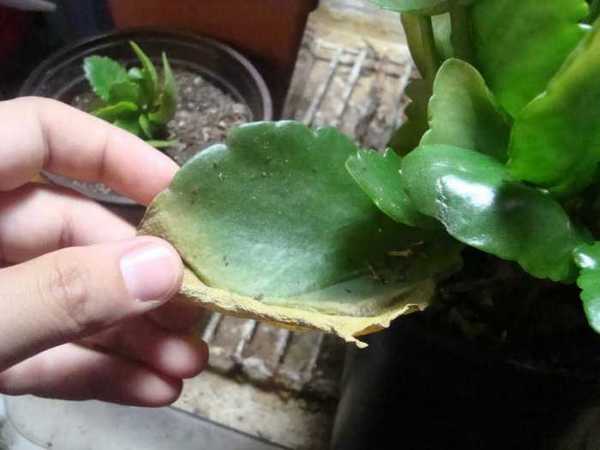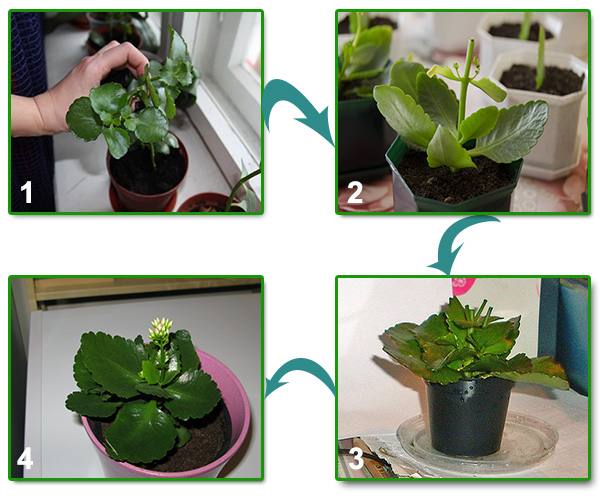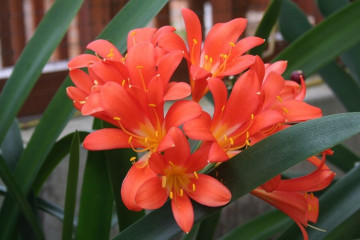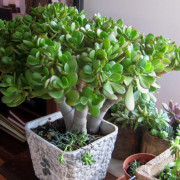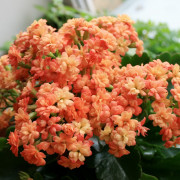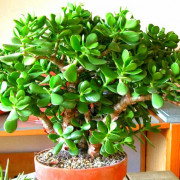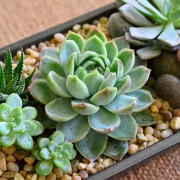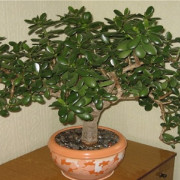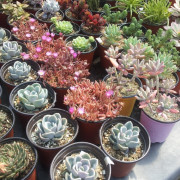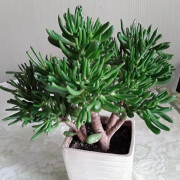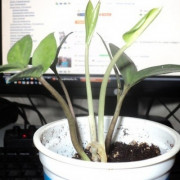Why Kalanchoe does not bloom at home
Content:
Popular varieties of home-grown succulents include Kalanchoe. The exotic beauty came from Madagascar and pleases the owners with its unusual leaves and lush flowering. The plant is characterized by low demands on living standards, but inexperienced flower growers often ask why the Kalanchoe does not bloom. The absence of buds is caused by gross errors in the maintenance mode.
Features of flowering Kalanchoe at home
In nature, there are more than 200 varieties of culture; no more than 20 species live in houses. Tropical plants are accustomed to the harsh environment for survival and do not require careful or difficult maintenance from their owners.
Fleshy foliage has the ability to accumulate moisture, which allows the plant to do without water for a long time. But the formation of buds directly depends on the content norms.
In addition to its decorative appearance, the culture is characterized by medicinal properties that are widely used not only in folk but also in official medicine. Tinctures created from it:
- accelerate wound healing,
- suppress inflammatory processes,
- stop bleeding.
Commercially obtained juice can be bought at any pharmacy.
How many times a year it blooms, periods of activity and rest
The formation of buds begins in winter, the exact time depends on the Kalanchoe subspecies. With the arrival of spring days and warmth, they fall off, an increase in their life expectancy is achieved by specialized methods.
Certain varieties of the crop are late flowering - the first buds appear in early spring and fall off by the end of September or early October. After the end of the phase, the plant goes into a dormant period: it is necessary to restore strength.
Kalanchoe stretches up and only lets go of the leaves
In the store, the plant resembles a small bush with carved leaves, the surface of which is strewn with half-opened buds. After a while, the process declines, the culture stretches upward, the leaf plates begin to fall off.
Why does the indoor Kalanchoe stretch out and not bloom? There are two root causes for this behavior:
- lack of a dormant period - if the plant did not have a month's respite after the development of buds, then it does not have time to form new buds;
- insufficient illumination - for any succulent daylight hours should last at least 10 hours, its lack leads to deformation, thinning and increased fragility of leaf plates, damage to the stem.
When the first signs of insufficient illumination appear, the plant needs to install an additional light source and cut off the shoots that are elongated in height. After pruning, he is provided with complete rest; within one month, the density of the crown should recover on its own.
Why a flower may not bloom, reasons
If the Kalanchoe does not bloom for a long time, then the main reasons for such a deviation include a violation of the rules of maintenance. Inexperienced growers are sure that rare watering is sufficient for its normal development. But despite the prevailing opinion, it requires the implementation of certain procedures.
Kalanchoe can refuse to form buds in a number of cases:
- violation of the temperature regime - attempts to keep in a cold room affect the viability of the succulent;
- wrong choice of lighting - lack or short daylight hours (less than 10 hours) leads to active growth of the green part, weakening and damage to diseases;
- insufficient or excessive moistening of the earth - plants like a little dried out soil, and not swampy soil;
- shortage or excess of fertilizers - a large amount of mineral solutions will provoke an increase in green mass, and their deficiency - slow growth;
- individual plant subspecies belong to the subgroup of annual hybrids - the question of life expectancy is asked to the seller before buying;
- refusal of pruning - if it is not carried out, then with active vegetative growth the bush will lose its decorative shape;
- refusal of the rest period - after each bud formation, it requires rest for 3-4 weeks, if the rules are ignored, the buds do not have time to form;
- transplanting out of season - it is carried out only after the buds wither, from late summer to early autumn;
- poor soil - succulents prefer loose soil with a neutral reaction, if the norms are violated, they refuse to grow and bloom.
The main mistakes in flower care
In the absence of peduncle formation, unhealthy or weakened appearance, you need to check the standards for its content.
Incorrect lighting
Depending on the season, the culture requires different levels of illumination. During the growing season, it is sent to the east or west window. The south side is not suitable - due to constant exposure to direct sunlight, the bush not only slows down in development, but also burns. In the bright sun, the windows must be shaded.
Determination of a sufficient level of lighting is carried out by examining the greenery. If everything is in order, then there is a reddish border at the edges of the leaves, with a shortage, pale and elongated leaf plates are found.
Unsuitable soil composition
Plants sold in stores are planted in minimal containers, and the basis of the substrate is soil. Such land is not suitable for the normal development of bushes and requires replanting work.
During the transplant procedure, a container of a larger volume is taken (by 2-3 cm), it must have drainage holes. Preference is given to store-bought mix for cacti and succulent plants.
Improper watering
Flowers do not require abundant watering - the procedure is carried out after the substrate has completely dried. Overfilling can become a source of impaired metabolic processes, decay of the root system, and fungal infections.Insufficient irrigation leads to yellowing and dropping of the leaf blades. A specimen that has survived a drought will recover for a long time.
Overflow is rather difficult to determine and this is the main problem. Symptoms appear after a long period of time due to the fact that the primary negative processes affect the root system initially.
The injured bush can be saved if it is timely dried and transplanted into a fresh substrate. Before planting, the rotted parts of the roots are excised, the places of the cuts are treated with a disinfectant.
Signs of waterlogging of the culture include:
- the formation of yellowness on the leaves;
- paleness and lethargy of the plates;
- constantly wet substrate.
The amount of liquid for irrigation is selected in accordance with the temperature regime and the season. At rest, the plant is practically not irrigated, the rest of the time - every week.
High or low room temperature
The optimal temperature regime during the formation of buds is +18 .. + 29 degrees. Due to its subtropical origin, the succulent is not afraid of increased dry air and heat. The only problem is drafts; it should not be near air conditioners or open vents.
The culture will easily survive a higher temperature, but lowering it to 10 degrees can lead to damage to the green part. Short pruning of the shoots is used as the only treatment.
Excessive feeding
A large amount of fertilizers provokes the active development of green mass and the lack of bud formation. A succulent plant needs feeding every 3-4 weeks, and during budding - twice a month. During the annual hibernation, no fertilizer is applied.
For the procedure, use store solutions intended for cacti and succulents. They include nitrogenous, phosphorus and potassium elements. The mixture is poured to the roots, avoiding it getting on the shoots and inflorescences. Some flower growers advise diluting the composition with more liquid than indicated in the instructions.
The main signs of insufficient intake of nutrients are considered:
- yellowness throughout the green part;
- darkening and deformation of the plates;
- loss of lower leaves;
- lack of budding.
How to make Kalanchoe bloom in good conditions
Full adherence to the rules of plant supervision does not guarantee the appearance of inflorescences. Many growers are wondering what needs to be done to make the Kalanchoe bloom. There are several nuances that help make the bush not only bloom, but also increase this period in time. The procedures are carried out after the end of the budding season.
The gardener will have to create an environment similar to the natural one - in its natural habitat, the culture experiences a tropical winter with a decrease in daylight hours, rare rains and a lower temperature. After the florist creates an analogy, the plant can bloom.
What do I need to do
To force the plant to release inflorescences should be done by step-by-step application of the following procedures:
- Artificially immerse the specimen in a state of hibernation for 2-3 months. To stop growth and development, the stems are cut almost to the ground level, the container is covered with dense cloth and removed to a dark room.The room must maintain a temperature regime of +15 degrees. Irrigation of the substrate is carried out twice a month, fertilizers are not applied for the entire period.
- From the first summer months to November, he needs to form a strong crown. The box is returned to its original place, watering is carried out after the soil has dried, every 10 days. The temperature is maintained at +16 .. + 25 degrees. To increase the density of the green part, the extra leaves are removed, trying to maintain uniform proportions.
- Stimulating kidney growth - requires the creation of an eight-hour daylight hours, moderate irrigation of the substrate and a temperature regime of +18 degrees. The first buds will form in 3-5 days.
The secondary method used to stimulate the kidneys is stress therapy. The succulent is wrapped in a thick, light-proof cloth and sent to a dark room for one month. For the entire period, you need to stop watering or feeding it.
For an experienced grower, it is not difficult to find the root cause of the lack of buds on a succulent. Close observation can identify external changes that signal a developing problem. Observing the rules of caring for the crop, do not forget that excessive moisture of the earth often leads to the development of fungal pathologies and attacks of parasitic insects. Only the exact fulfillment of the requirements will help to grow a healthy and periodically flowering plant, with good immunity and resistance to diseases and pests.
